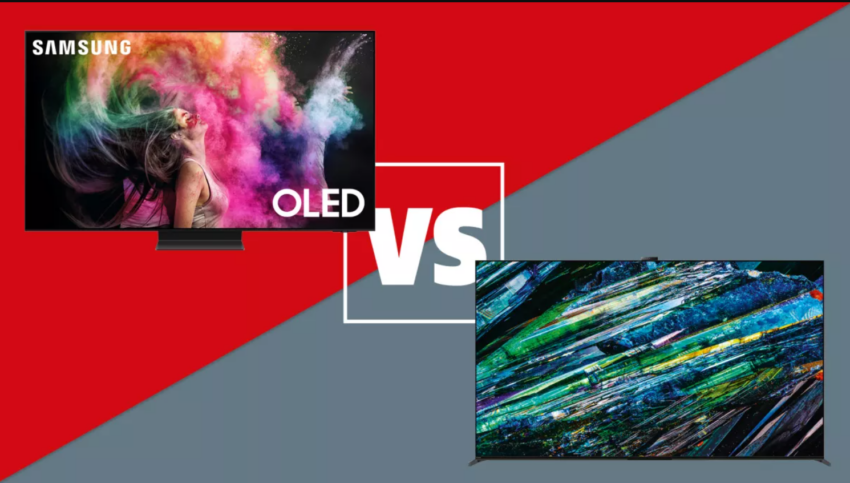Samsung Display introduced a new OLED in 2022. QD-OLED combines OLED with Quantum Dot to improve OLED display brightness and color. Last year, just two QD-OLED TVs were released, but we loved them.
Samsung launched the S95B QD-OLED first. Its brightness, energy, and gaming support won it five stars. Sony followed with the A95K QD-OLED, which received a five-star rating for its brilliant, natural, and genuine picture and sound.
As we love these two QD-OLEDs, we were thrilled to learn about Samsung and Sony’s 2023 successor versions, the S95C and A95L. We have handled both models, but neither has arrived in our test laboratories yet.
Based on our expertise, previous generation models, and Samsung and Sony’s information, consider this an early comparison.
Sony A95L versus Samsung S95C: pricing

Samsung revealed S95C pricing, which sadly raises prices for UK and US consumers. The 55-inch model costs £2700/$2500, while the 65-inch model costs £3600/$3300. A 77-inch variant was added this year. Costs £5100/$4500.
As said, there is an increase over the previous generation model, which is irritating but not surprising given the present economic scenario; LG likewise raised the price of its new G3 OLED. S95C vs. S95B, how much more expensive? Well…
| Size | Samsung S95B (2022) | Samsung S95C (2023) |
|---|---|---|
| 55 | £2399 / $2200 / AU$4079 | £2699 / $2500 / AU$TBC |
| 65 | £3500 / $3000 / AU$5249 | £3599 / $3300 / AU$TBC |
| 77 | No such model | £5099 / $4500 / AU$TBC |
Samsung’s S95C isn’t Samsung’s only new QD-OLED, but Sony’s A95L is. The S90C is a cheaper QD-OLED set with a weaker sound system, no One Connect box, and less brightness.
S95C vs. A95L: Build

The Sony and Samsung use the same second-generation QD-OLED in 55- and 65-inch sizes as last year, but the 77-inch model is new. Samsung Display wants to capitalize on QD-OLED and advance research, so adding more sizes is a solid start.
Both versions have narrow bezels and come with a stand for media unit positioning. They can also be wall mounted. Sony replaced its hefty A95K stand with angled feet, whereas Samsung used a centre-mounted, low-profile square pedestal (as seen above). The A95adaptable K’s stand, which could be put flat against a wall or give the TV a floating look, will be missed, but its deceptive bulk may be an issue.
Sony A95L versus Samsung S95C: Features

The S95C and A95L, two 2023 flagship OLED Televisions, are feature-packed. Samsung supports HDR10, HLG, and HDR10+, whereas Sony supports Dolby Vision. Although Netflix and Disney Plus embrace Dolby Vision, Samsung’s continued support of HDR10+ is frustrating.
Due to their HDMI 2.1 connectors, these Televisions offer 4K/120Hz gaming. Samsung utilizes its own processor with four HDMI 2.1 connections, whereas Sony uses the newest MediaTek Pentonic 1000 with two (its other two HDMIs are of the older, 2.0 spec). If you require eARC for a soundbar or AVR, you’ll only have one HDMI 2.1 socket. That’s bad for dedicated gamers with numerous systems. All sets support VRR and ALLM, favorable gameplay characteristics.
Both Televisions’ speakers can output Dolby Atmos through the HDMI eARC plug.
Sony A95L vs. Samsung S95C: Picture

We’ve used both models at events and hands-on sessions, but we haven’t done a complete evaluation.
Because to the second-generation QD-OLED display, the Samsung S95C’s brightness and vibrancy were instantly noticeable. During a quick demo of No Time To Die’s action-packed automobile pursuit through Matera, the S95C’s delivery had more power and finesse than last year’s S95B.
In a sunset scene in The Matrix Resurrections, the S95C QD-OLED had a more accurate orange glow than the LG G2, yet the LG G2 revealed more detail.
We only saw a prototype Sony A95L in Vivid image setting. The Samsung S95B and Sony A95K from last year flanked it. The A95L looked great, brighter and more lively than the A95K. Even with the Vivid preset, the picture wasn’t strange.
The A95L’s improved punch and vitality, clearer details, and sharper edges provide a richer, three-dimensional image. However, our time with the A95L was brief, and the prototype unit may not accurately represent its performance.
Sony A95L versus Samsung S95C: Sound

Since early Televisions didn’t have audio, it’s hard to compare. The Sony’s 2.2-channel speaker system has two actuators that vibrate the screen. Two bass woofers support this. We’re glad Sony’s screen vibration-based technology is back on the A95L.
Samsung added a 70W 4.2.2 sound system to the S95C. The S95B’s 60W 2.2.2 system, which we didn’t like, is improved. Samsung may have improved speaker positioning, so it’s not just “more numbers = greater performance.” We hope this sound system improves.
Samsung S95C versus Sony A95L: Early verdict

We’ll need to compare both QD-OLED before making a decision. Nonetheless, we expect two top performers from Samsung and Sony, and we are anxious to test both sets to determine the best QD-OLED model.
LG Display’s new OLED panels with Micro-Lens Array (MLA) technology enhance OLED brightness to levels that should match QD-OLED. We’ll need a QD-OLED and an MLA-equipped OLED to compare, so stay tuned.

